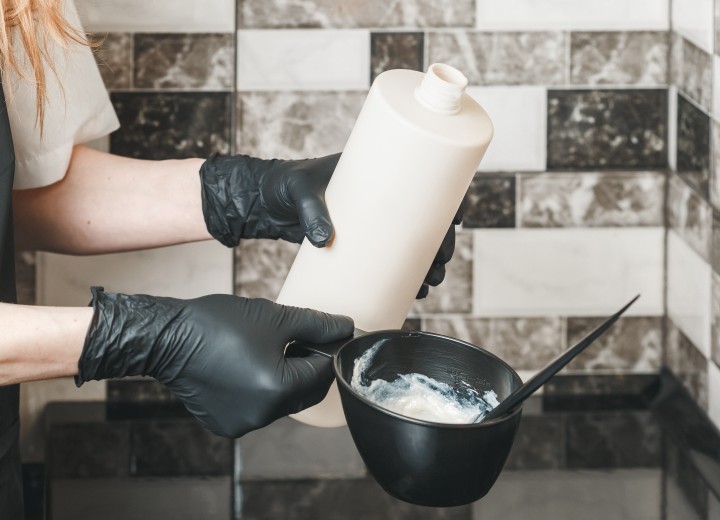Going from Medium Brown Hair to Blonde

A: For the purpose of mixing with hair bleach, you're much better off using 20-volume developer, and you're correct in intuiting that the 20-volume mix can simply be left on the hair longer. The 30- and 40-volume developers will work faster, but can also result in severely damaged hair unless you watch them VERY closely.
That being said, I'm always nervous when someone talks about using hair bleach on their own at home. There are a lot of ways for the process to go badly, and many factors that determine how your hair will respond to the bleaching process.
The overall health and condition of the hair, its porosity, and whether or not it has been previously chemically treated (with hair color or perms) are all factors that can affect how quickly the hair will react to the bleach. If your hair has been previously colored, you can even get some unpleasant and unwanted color results. Depending on the kind of color used, you can get severe hair damage.
If your hair is virgin (not previously treated with any chemicals), and in good healthy condition, then I suggest you be sure to do your bleaching process in a bathroom with good lighting, in front of your mirror, and with ready access to water for rinsing if the bleaching seems to be happening faster than you expected. Be sure to use gloves and work with clean, dry hair. The day before you plan to do the bleaching; you can give your hair a deep conditioning treatment to help protect against possible damage.
Remember to apply the bleach quickly, because as soon as it is applied to the hair it begins to work. Apply it to the middle lengths of the hair first, about one-inch from the scalp to about two inches from the ends. Next, apply the bleach to the scalp area of the hair and use your fingers to pull the bleach through to the ends of the hair.
You work this way because the scalp area is warmer due to body heat, which causes the bleach to work faster there, and the ends are more porous which means they will react more quickly to the bleach. Cover the hair with a plastic cap when you've gotten the bleach applied.
Monitor the bleaching CONSTANTLY. Often, the lightening process will speed up as the bleaching mix opens the cuticle layer. Don't answer the phone or leave the mirror for any reason. If by chance your hair seems to be slow to respond to the bleaching mix, you can use a hair dryer to warm the hair and cause the bleach to work faster.
Once you've gotten the desired lightening, rinse the hair immediately with lukewarm water and apply a conditioner. Leave the conditioner for the recommended time and rinse it with cool water. Be sure to rinse the bleach THOROUGHLY. Remember, hair color mixtures will go inert after 30 minutes, but bleach will work as long as it's moist.
It's because of the speed with which you must work and the vigilance required to prevent damaging the hair, that I do not recommend doing this at home. Your stylist is trained to do these operations quickly and devote their full attention to the process. However, if you insist on doing this yourself, I wish you the very best results.
©hairfinder.com
See also:
Bleaching
Bleaching and melted hair
How to recognize damaged hair